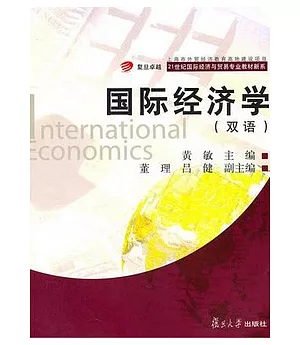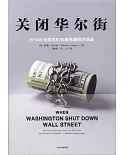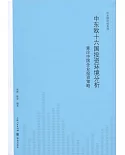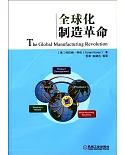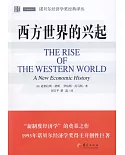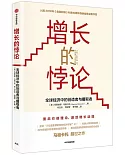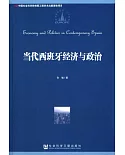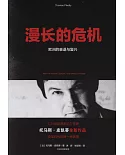本書是一本長期從事國際經濟學雙語教學的教師,按照目前我國經濟學領域雙語教學的實際情況編寫的內容精煉、言語通俗、理論與實踐相結合的教材。
本書分為十一章,包括古典貿易理論、新古典貿易理論、現代貿易理論、關稅與非關稅壁壘、區域貿易安排、國際收支與匯率、匯率決定理論、國際收支調節、開放經濟中的宏觀經濟政策、宏觀經濟政策的國際傳導與協調、國際要素流動與跨國公司。本書在編寫過程中充分考慮易用性,在每章篇首列出本章將出現的專業詞匯,並給出中文釋義,方便讀者學習;在一些邏輯性較強、內容較難的章節,給出邏輯推演圖或說明,幫助讀者理解。
本書適合高校財經類專業師生作為教材使用,也可作為實務工作者的參考讀物。
目錄
Chapter 1 Classical Theories of International Trade
1.1 Mercantilism
1.2 Trade Based on Absolute Advantage: Adam Smith
1.3 Trade Based on Comparative Advantage: David Ricardo
1.3.1 An Example of Comparative Advantage
1.3.2 Gains from Specialization and Trade with Comparative Advantage
1.3.3 Comparative Advantage in Money Terms
1.4 Comparative Advantage and Opportunity Cost
1.4.1 Gains from Specialization and Trade with Opportunity Costs
1.4.2 Production Possibilities Frontier and Constant Opportunity Costs
1.4.3 Trade under Increasing Opportunity Costs
1.5 Comparative Advantage with More Than Two Commodities and Countries
1.5.1 Comparative Advantage with More Than Two Commodities
1.5.2 Comparative Advantage with More Than Two Countries
1.6 Theory of Reciprocal Demand
1.7 Offer Curve and Terms of Trade
1.7.1 Offer Curve
1.7.2 Equilibrium Terms of Trade
1.7.3 Other Concepts of the Terms of Trade
Chapter 2 New Classical Theories of International Trade
2.1 Specific Factor Model
2.2 Factor Endowment Theory (H-O Model)
2.3 Other New Classical Theories
2.3.1 Rybczynski Theorem
2.3.2 Factor Price Equalization Theory
2.3.3 Stolper-Samuelson Theorem
2.3.4 Explaining Wage Inequality
2.4 Leontief Paradox
Chapter 3 Modern Trade Theories
3.1 Existence of Intraindustry Trade
3.2 Technological Gap, Product Life Cycle and International Trade
3.2.1 Technological Gap Theory
3.2.2 Product Life Cycle Theory
3.3 Theory of Overlapping Demands
3.4 Economies of Scale, Imperfect Competition, and International Trade
3.4.1 Economies of Scale and International Trade
3.4.2 Monopolistic Competition and Trade
3.5 Reciprocal Dumping Model
3.5.1 Economics of Dumping
3.5.2 Reciprocal Dumping
Chapter 4 Tariffs and Nontariff Barriers
4.1 Theories for Trade Protection
4.1.1 Infant Industry Argument
4.1.2 Terms of Trade Argument
4.1.3 Domestic Market Failure Argument
4.1.4 Strategic Trade Policy
4.2 Tariffs
4.2.1 Types of Tariffs
4.2.2 Effective Rate of Protection
4.2.3 Tariff Welfare Effects
4.3 Nontariff Trade Barriers
4.3.1 An Introduction to Nontariff Trade Barriers
4.3.2 Effects of Import Quota
4.3.3 Effects of Export Subsidy
Chapter 5 Regional Trading Arrangements
5.1 Types of Regional Trading Arrangements
5.2 Effects of Customs Union
5.2. l Static Effects
5.2.2 Dynamic Effects
5.3 Practice of Regional Integration
5.3.1 European Union
5.3.2 North American Free Trade Agreement
5.3.3 Association of Southeast Asian Nations
Chapter 6 Balance of Payments and Foreign Exchange
6.1 Balance of Payments
6.1.1 Current Account
6. l. 2 Capital and Financial Account
6.1.3 Automatic Adjustment of the Balance of Payments
6.2 Foreign Exchange Market and Exchange Rates
6.2.1 Foreign Exchange Market
6.2.2 Exchange Rate
6.2.3 Determinants of Exchange Rates
6.3 Exchange Rate System
Chapter 7 Theories of Exchange Rate Determination
7.1 Theory of Purchasing Power Parity
7.1.1 Alsolute Purchasing Power Parity
7.1.2 Relative Purchasing Power Parity
7.2 Theory of Interest Rate Parity
7.2.1 Covered Interest Rate Parity
7.2.2 Uncovered Interest Rate Parity
7.3 Balance of Payments Approach to Exchange Rates
7.4 Asset Market Approach to Exchange Rates
7.4.1 Flexible-Price Monetary Approach
7.4.2 Sticky-Price Monetary Approach
7.4. 3 Portfolio Approach to Exchange Rates
Chapter 8 Balance of Payments Adjustments
8.1 Elasticities Approach to the Balance of Payments
8.2 Multiplier Approach to the Balance of Payments
8.3 Absorption Approach to the Balance of Payments
8.4 Monetary Approach to the Balance of Payments
8.4.1 A Change in Domestic Credit under Fixed Exchange Rates
8.4.2 A Change in the Quantity of Money Demanded under Fixed Exchange Rates
8.4.3 A Change in Domestic Credit under Floating Exchange Rates
8.4.4 A Change in the Quantity of Money Demanded under Floating Exchange Rates
Chapter 9 Macroeconomic Policie in Open Economy
9.1 Internal Balance and External Balance in Open Economy
9.1.1 Internal Balance and External Balance
9.1.2 Policy Instruments
9.1.3 Tinbergen Rule
9.1.4 Meade Conflict
9.2 Policy Mix to Achieve Both Internal Balance and External Balance
9.2.1 Mundeli Assignment Rule
9.2.2 Swan Model
9.3 Effects of Macroeconomic Policies under Fixed Exchange Rates
9.3.1 IS-LM-BP Model
9.3.2 Effects of Fiscal Policy under Fixed Exchange Rates
9.3.3 Effects of Monetary Policy under Fixed Exchange Rates
9.4 Effects of Macroeconomic Policies under Floating Exchange Rates
9.4.1 Effects of Fiscal Policy under Floating Exchange Rates
9.4.2 Effects of Monetary Policy under Floating Exchange Rates
9.4.3 Mundell Incompatible Trinity
Chapter 10 International Transmission and Coordination of Macroeconomic Policies
10.1 International Transmission of Macroeconomic Policies under Fixed Exchange Rates
10. 1. 1 Two-Nation Mundell-Fleming Model
10.1.2 International Transmission of Fiscal Policy under Fixed Exchange Rates
10.1.3 International Transmission of Monetary Policy under Fixed Exchange Rates
10.2 International Transmission of Macroeconomic Policies under Floating Exchange Rates
10.2.1 International Transmission of Fiscal Policy under Floating Exchange Rates
10.2.2 International Transmission of Monetary Policy under Floating Exchange Rates
10.3 International Transmission of Inflation
10.3.1 Price Adjustment Mechanism of Inflation Transmission
10.3.2 Balance of Payments Mechanism of Inflation Transmission
10.3.3 Interest Rate Transmission Mechanism
10.4 International Policy Coordination and Monetary Cooperation
10.4.1 International Coordination of Macroeconomic Policies
10.4.2 International Monetary Cooperation
Chapter 11 International Factor Movements and Multinational Enterprises
11.1 International Movement of Labor
11.1.1 Motives for International Labor Movement
11.1.2 Economic Effects of Labor Movement
11.1.3 Other Welfare Effects of International Labor Movement
11.2 International Movement of Capital
11.2.1 Data on International Movement of Capital
11.2.2 Motives for International Capital Movement
11.2.3 Economic Effects of Capital Movement
11.3 Multinational Enterprises and Foreign Direct Investment Theories
11.3.1 Multinational Enterprises
11.3.2 Foreign Direct Investment Theories
1.1 Mercantilism
1.2 Trade Based on Absolute Advantage: Adam Smith
1.3 Trade Based on Comparative Advantage: David Ricardo
1.3.1 An Example of Comparative Advantage
1.3.2 Gains from Specialization and Trade with Comparative Advantage
1.3.3 Comparative Advantage in Money Terms
1.4 Comparative Advantage and Opportunity Cost
1.4.1 Gains from Specialization and Trade with Opportunity Costs
1.4.2 Production Possibilities Frontier and Constant Opportunity Costs
1.4.3 Trade under Increasing Opportunity Costs
1.5 Comparative Advantage with More Than Two Commodities and Countries
1.5.1 Comparative Advantage with More Than Two Commodities
1.5.2 Comparative Advantage with More Than Two Countries
1.6 Theory of Reciprocal Demand
1.7 Offer Curve and Terms of Trade
1.7.1 Offer Curve
1.7.2 Equilibrium Terms of Trade
1.7.3 Other Concepts of the Terms of Trade
Chapter 2 New Classical Theories of International Trade
2.1 Specific Factor Model
2.2 Factor Endowment Theory (H-O Model)
2.3 Other New Classical Theories
2.3.1 Rybczynski Theorem
2.3.2 Factor Price Equalization Theory
2.3.3 Stolper-Samuelson Theorem
2.3.4 Explaining Wage Inequality
2.4 Leontief Paradox
Chapter 3 Modern Trade Theories
3.1 Existence of Intraindustry Trade
3.2 Technological Gap, Product Life Cycle and International Trade
3.2.1 Technological Gap Theory
3.2.2 Product Life Cycle Theory
3.3 Theory of Overlapping Demands
3.4 Economies of Scale, Imperfect Competition, and International Trade
3.4.1 Economies of Scale and International Trade
3.4.2 Monopolistic Competition and Trade
3.5 Reciprocal Dumping Model
3.5.1 Economics of Dumping
3.5.2 Reciprocal Dumping
Chapter 4 Tariffs and Nontariff Barriers
4.1 Theories for Trade Protection
4.1.1 Infant Industry Argument
4.1.2 Terms of Trade Argument
4.1.3 Domestic Market Failure Argument
4.1.4 Strategic Trade Policy
4.2 Tariffs
4.2.1 Types of Tariffs
4.2.2 Effective Rate of Protection
4.2.3 Tariff Welfare Effects
4.3 Nontariff Trade Barriers
4.3.1 An Introduction to Nontariff Trade Barriers
4.3.2 Effects of Import Quota
4.3.3 Effects of Export Subsidy
Chapter 5 Regional Trading Arrangements
5.1 Types of Regional Trading Arrangements
5.2 Effects of Customs Union
5.2. l Static Effects
5.2.2 Dynamic Effects
5.3 Practice of Regional Integration
5.3.1 European Union
5.3.2 North American Free Trade Agreement
5.3.3 Association of Southeast Asian Nations
Chapter 6 Balance of Payments and Foreign Exchange
6.1 Balance of Payments
6.1.1 Current Account
6. l. 2 Capital and Financial Account
6.1.3 Automatic Adjustment of the Balance of Payments
6.2 Foreign Exchange Market and Exchange Rates
6.2.1 Foreign Exchange Market
6.2.2 Exchange Rate
6.2.3 Determinants of Exchange Rates
6.3 Exchange Rate System
Chapter 7 Theories of Exchange Rate Determination
7.1 Theory of Purchasing Power Parity
7.1.1 Alsolute Purchasing Power Parity
7.1.2 Relative Purchasing Power Parity
7.2 Theory of Interest Rate Parity
7.2.1 Covered Interest Rate Parity
7.2.2 Uncovered Interest Rate Parity
7.3 Balance of Payments Approach to Exchange Rates
7.4 Asset Market Approach to Exchange Rates
7.4.1 Flexible-Price Monetary Approach
7.4.2 Sticky-Price Monetary Approach
7.4. 3 Portfolio Approach to Exchange Rates
Chapter 8 Balance of Payments Adjustments
8.1 Elasticities Approach to the Balance of Payments
8.2 Multiplier Approach to the Balance of Payments
8.3 Absorption Approach to the Balance of Payments
8.4 Monetary Approach to the Balance of Payments
8.4.1 A Change in Domestic Credit under Fixed Exchange Rates
8.4.2 A Change in the Quantity of Money Demanded under Fixed Exchange Rates
8.4.3 A Change in Domestic Credit under Floating Exchange Rates
8.4.4 A Change in the Quantity of Money Demanded under Floating Exchange Rates
Chapter 9 Macroeconomic Policie in Open Economy
9.1 Internal Balance and External Balance in Open Economy
9.1.1 Internal Balance and External Balance
9.1.2 Policy Instruments
9.1.3 Tinbergen Rule
9.1.4 Meade Conflict
9.2 Policy Mix to Achieve Both Internal Balance and External Balance
9.2.1 Mundeli Assignment Rule
9.2.2 Swan Model
9.3 Effects of Macroeconomic Policies under Fixed Exchange Rates
9.3.1 IS-LM-BP Model
9.3.2 Effects of Fiscal Policy under Fixed Exchange Rates
9.3.3 Effects of Monetary Policy under Fixed Exchange Rates
9.4 Effects of Macroeconomic Policies under Floating Exchange Rates
9.4.1 Effects of Fiscal Policy under Floating Exchange Rates
9.4.2 Effects of Monetary Policy under Floating Exchange Rates
9.4.3 Mundell Incompatible Trinity
Chapter 10 International Transmission and Coordination of Macroeconomic Policies
10.1 International Transmission of Macroeconomic Policies under Fixed Exchange Rates
10. 1. 1 Two-Nation Mundell-Fleming Model
10.1.2 International Transmission of Fiscal Policy under Fixed Exchange Rates
10.1.3 International Transmission of Monetary Policy under Fixed Exchange Rates
10.2 International Transmission of Macroeconomic Policies under Floating Exchange Rates
10.2.1 International Transmission of Fiscal Policy under Floating Exchange Rates
10.2.2 International Transmission of Monetary Policy under Floating Exchange Rates
10.3 International Transmission of Inflation
10.3.1 Price Adjustment Mechanism of Inflation Transmission
10.3.2 Balance of Payments Mechanism of Inflation Transmission
10.3.3 Interest Rate Transmission Mechanism
10.4 International Policy Coordination and Monetary Cooperation
10.4.1 International Coordination of Macroeconomic Policies
10.4.2 International Monetary Cooperation
Chapter 11 International Factor Movements and Multinational Enterprises
11.1 International Movement of Labor
11.1.1 Motives for International Labor Movement
11.1.2 Economic Effects of Labor Movement
11.1.3 Other Welfare Effects of International Labor Movement
11.2 International Movement of Capital
11.2.1 Data on International Movement of Capital
11.2.2 Motives for International Capital Movement
11.2.3 Economic Effects of Capital Movement
11.3 Multinational Enterprises and Foreign Direct Investment Theories
11.3.1 Multinational Enterprises
11.3.2 Foreign Direct Investment Theories
網路書店
類別
折扣
價格
-
新書87折$151

